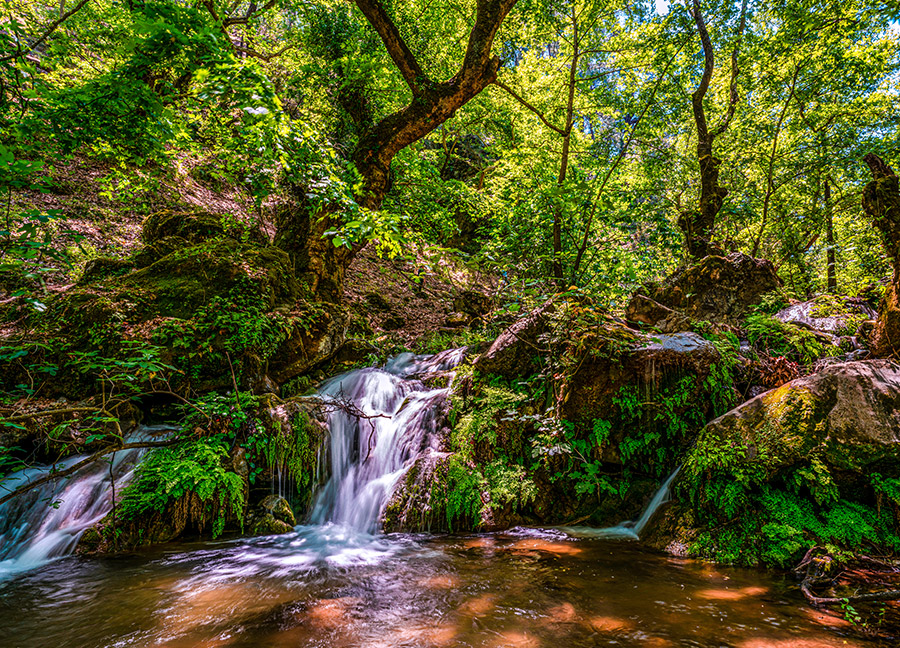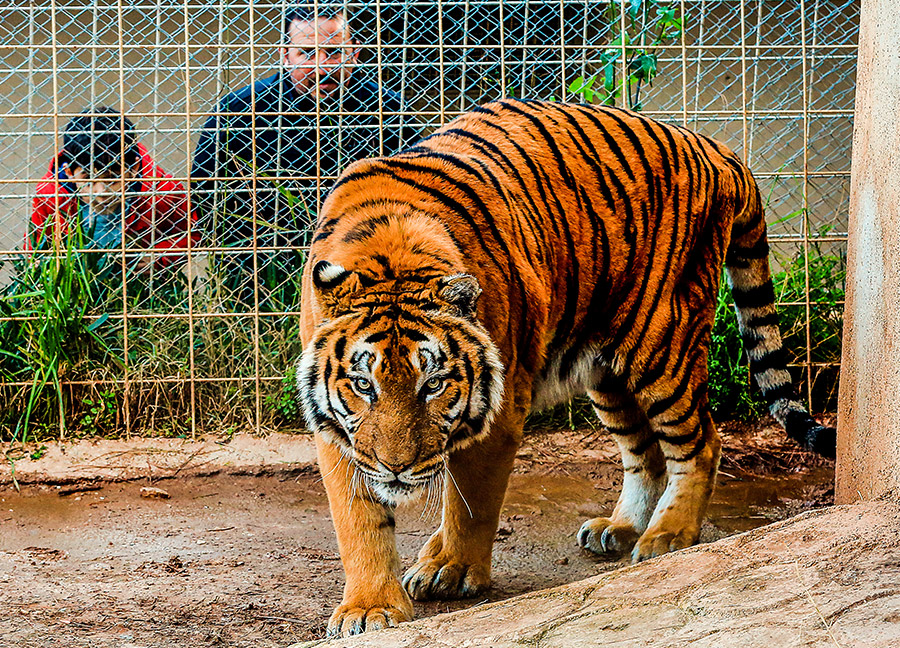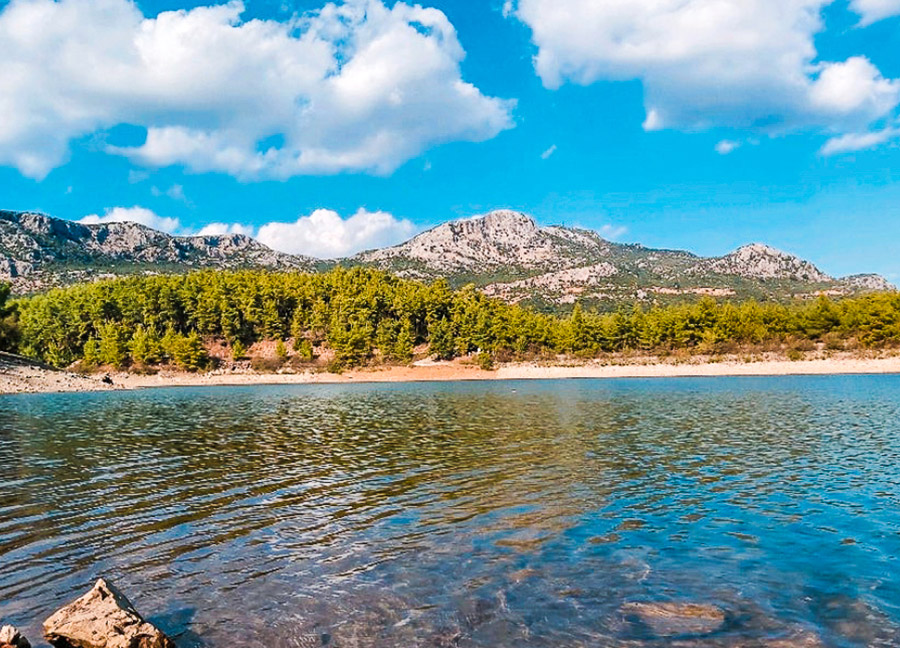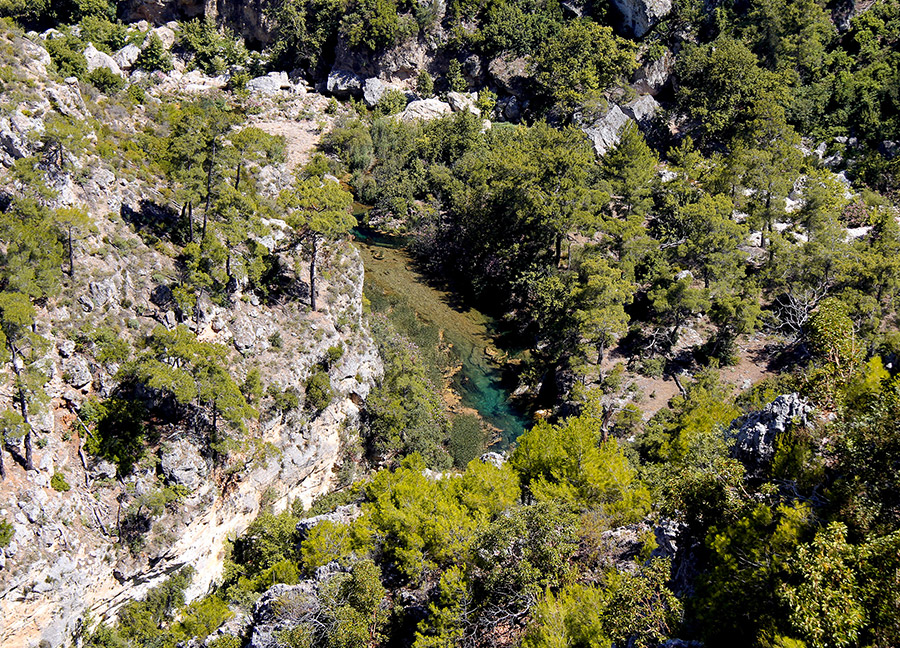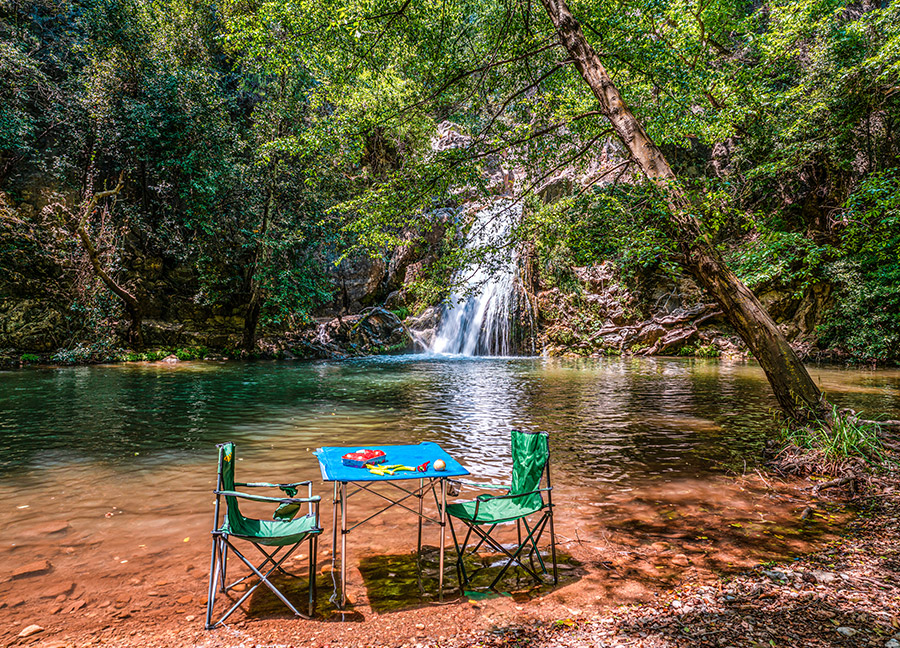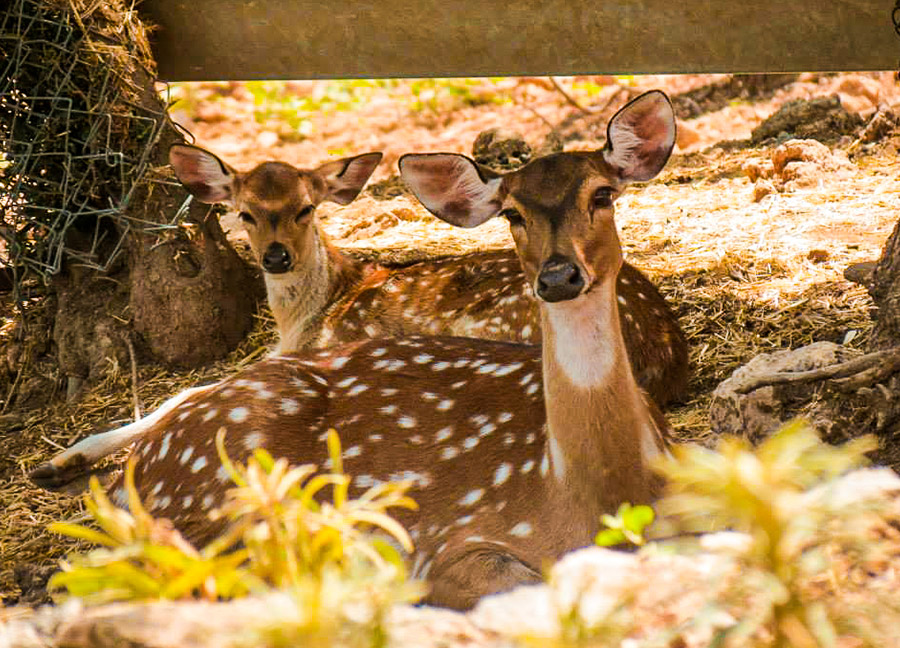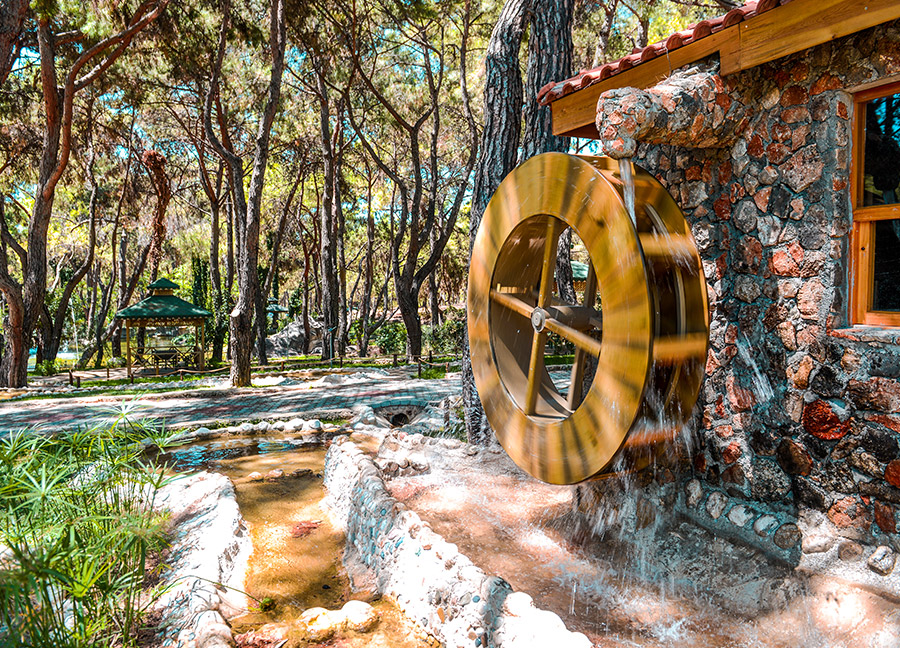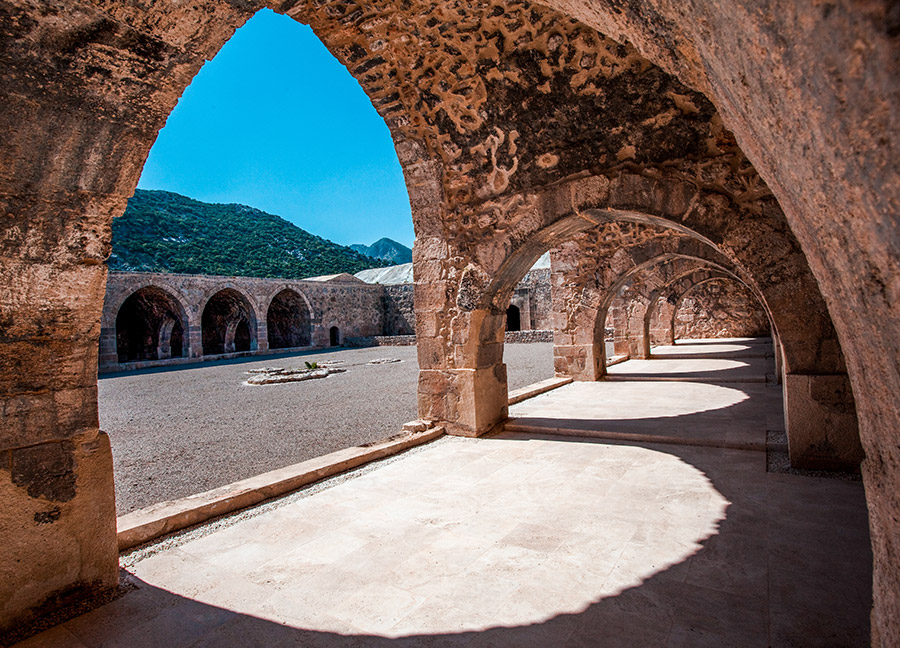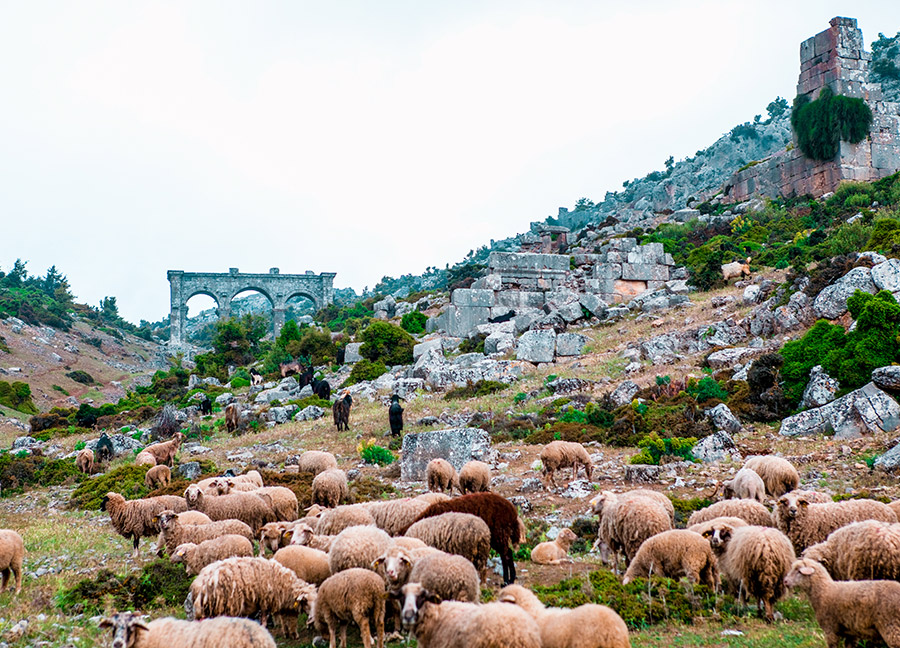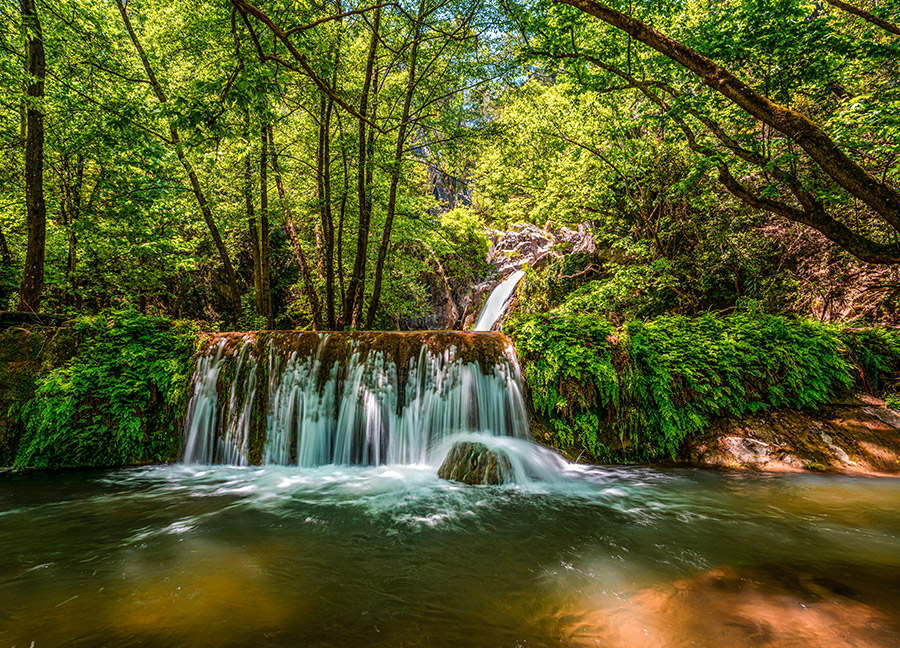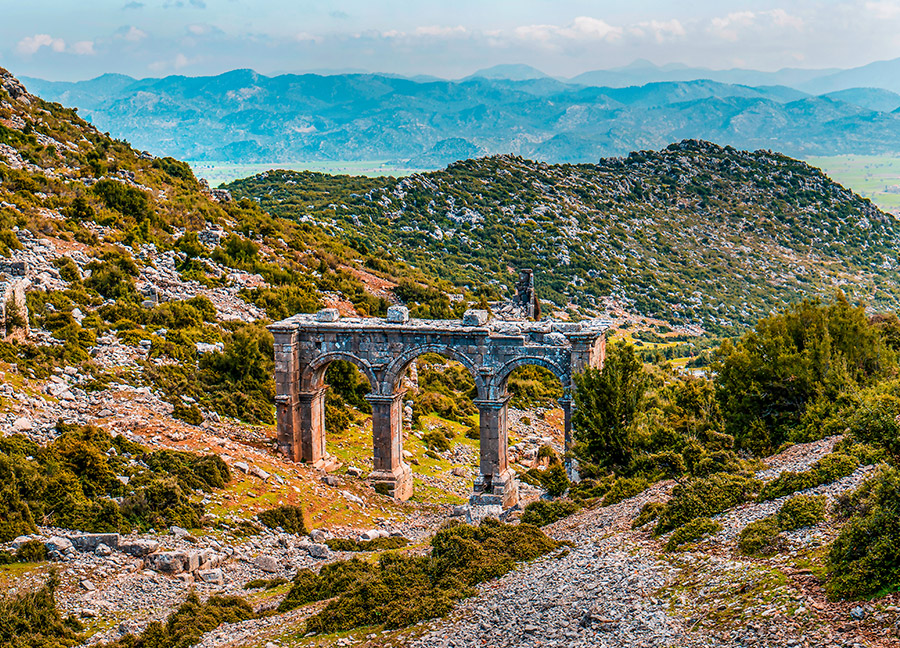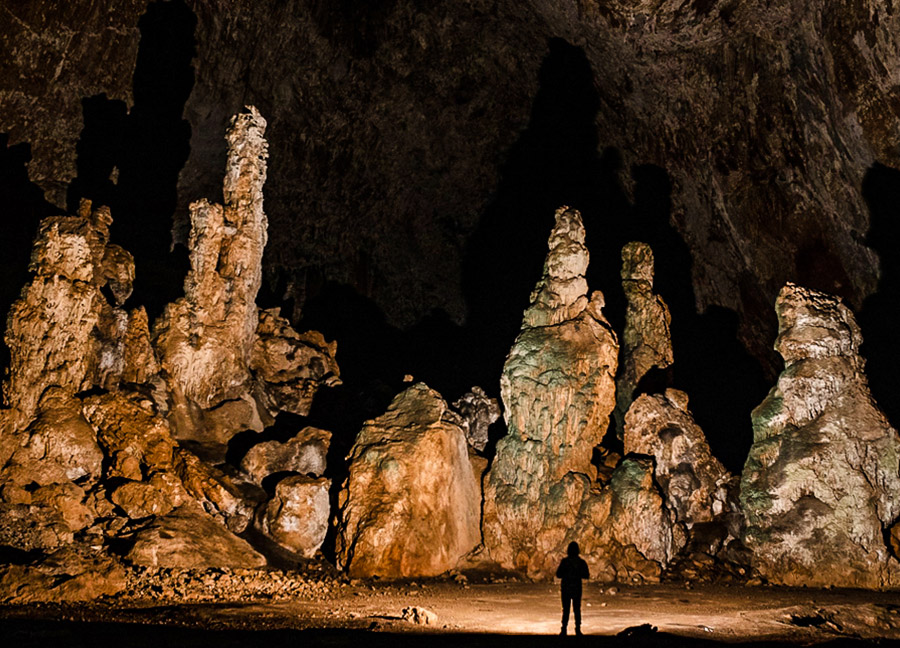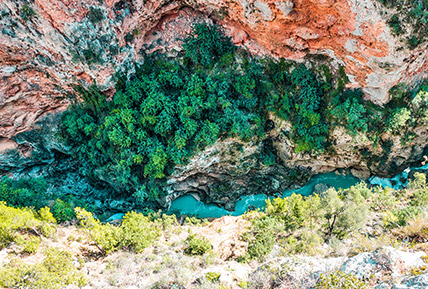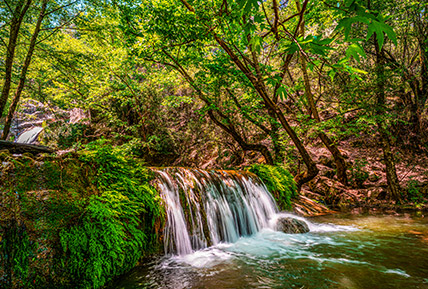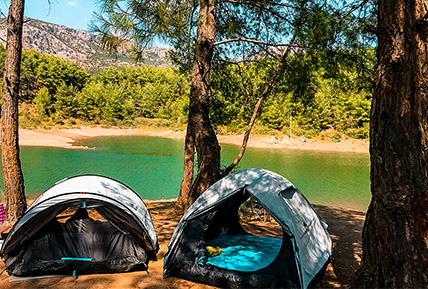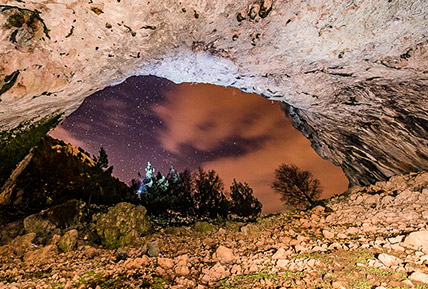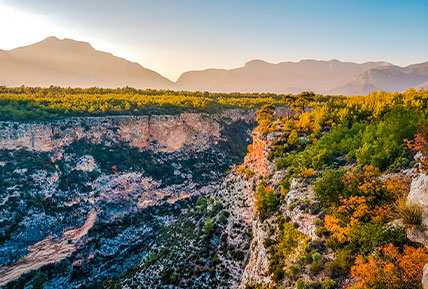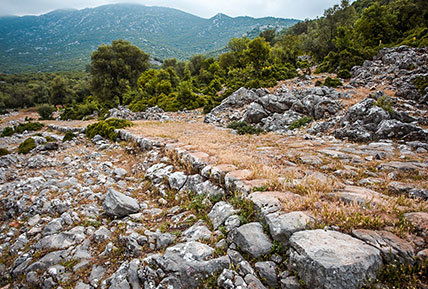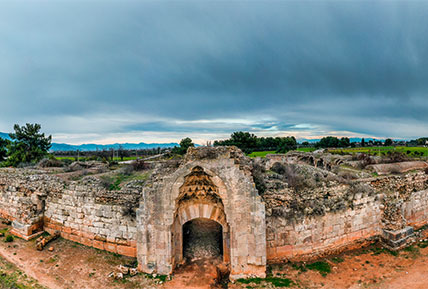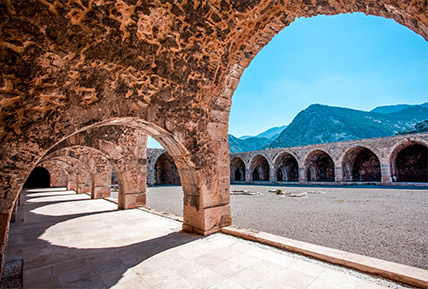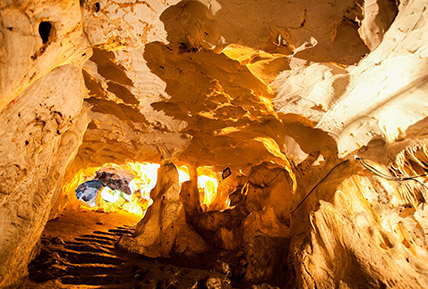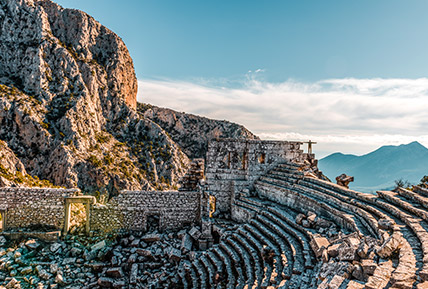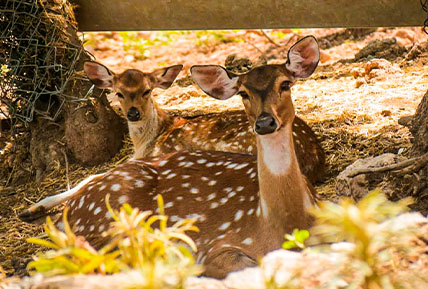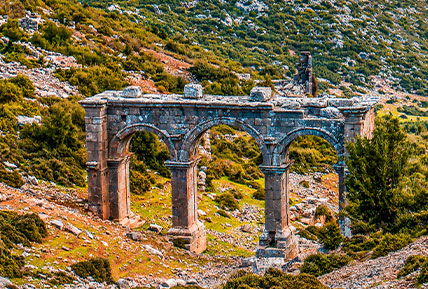In Döşemealtı, natural wonders, caves and canyons, historical buildings, mysterious ancient cities and world-famous carpets await you.
Döşemealtı is on the Antalya-Burdur highway. It is one of the central districts of Antalya and is 20 km from the city center.
The name of the district dates back to the Paleolithic Age. It is one of the roads connecting the cities of Pamphylia and Pisidia in Antiquity, Byzantine and Seljuk
It was named after the paving stone road in Derbent Strait, which continued its function in the Ottoman Periods and was used as a migration route by the Yoruks. The 4-meter-wide road gave the entire region its name. The district hosts the Kırkgöz Lake that feeds the Düden Waterfall. It was established as Kırkgöz - Yeniköy in 1934. It developed and expanded over time. It took the name Döşemealtı Town in 1977 and gained central district status in 2008.
The district has a higher altitude compared to the city center of Antalya. The temperature is 4-5 degrees lower on average, and the air is less humid and fresh, although the Mediterranean climate shows the effect. It is covered with pine forests on all four sides. The district hosts national parks with rich flora and fauna.
The economy of Döşemealtı is based on agriculture. In the district, which is considered the pomegranate paradise of Antalya, main agricultural products such as citrus fruits, olives, cotton, wheat, barley, corn, sesame and oats, as well as animal husbandry and weaving are among the important sources of income. The district where the Antalya Organized Industrial Zone is. It is also an industrial center.
The district has been the living space of the nomads for years. The geographical indication that registered Döşemealtı carpets, considered part of the nomadic culture, are world-famous. Carpets are adorned with original motifs using root dyes and woven by tying reverse knots. They are unique in their craftsmanship. Domestic and foreign tourists flock to the region to see the visual feast created by the thousands of carpets laid on the fields and empty fields in the district to purify their germs and transform their colors into pastels.
The Karain and Öküzini Caves are near the Yağca Village of the district. They are also famous for their historical artifacts, ancient ruins and caves. They are of great importance in providing information about the life levels of the first human communities living in the region.
Since its cultural, historical and natural beauties, Döşemealtı stands out with its tourism opportunities that will be an alternative to the sea, sand and sun trilogy. When you visit the district, you can see ancient cities, historical artifacts from the Seljuk Period, geological formations such as caves, waterfalls and canyons that offer impressive views.
EDITOR'S NOTE:
Do not leave Döşemealtı!
Before discovering the interesting geological formations and mysterious atmosphere of Karain Cave. It is the largest cave in Turkey where human beings have lived, and Neanderthal people's traces can be seen. It sheds light on the development of human history,
Before going on a time travel among the historical ruins of Termessos Ancient City. It is one of the most important historical riches not only of the district of Döşemealtı, but of all of Turkey, which has been very well preserved until today,
Without trekking in the Güver Cliff Canyon. It is a natural wonder with its rich plant diversity. It is within the borders of Düzlerçamı National Park,
Before visiting the Historical Kırkgöz Han. It is one of the last stops of the historical Silk Road before the Antalya Port. It succeeds in making the old and the new intertwined with its striking architecture and authentic atmosphere reflecting the Seljuk period,
Before seeing Kocaçay Waterfall. It is one of the hidden paradises of Antalya and home to the beautiful colors of nature,
Without tasting pomegranates. It is one of the few flavors of Turkey with its taste, aroma and color, produced on thousands of acres of land in the district.


